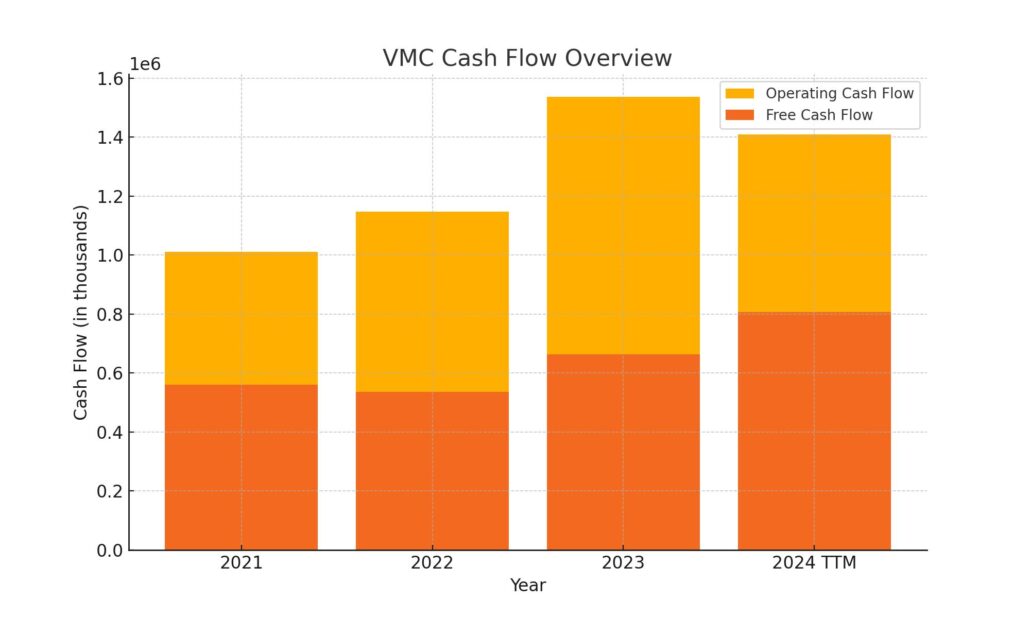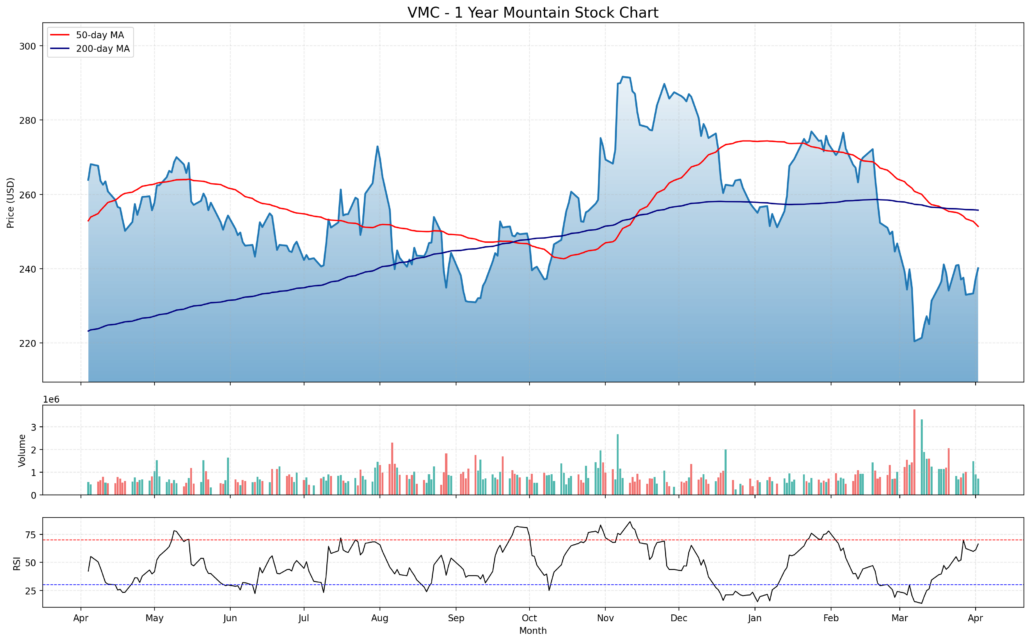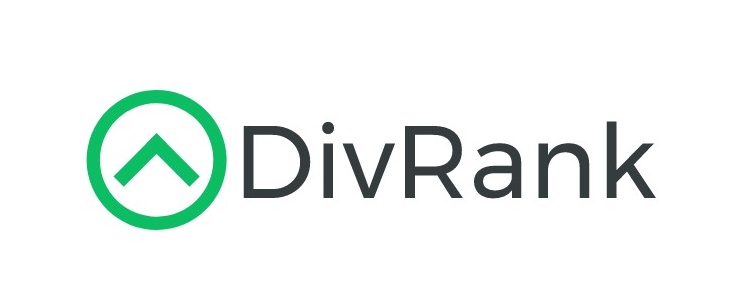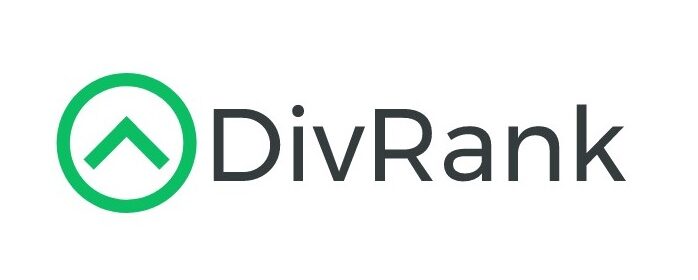Updated April 2025
Vulcan Materials is firmly rooted in something more fundamental—supplying the materials that build the very roads we drive on and the cities we live in. Headquartered in Birmingham, Alabama, Vulcan is the nation’s largest producer of construction aggregates like crushed stone, sand, and gravel.
While it may not have the buzz of a tech startup, Vulcan’s relevance is anything but temporary. As long as the country continues investing in infrastructure, this company will remain essential. For dividend investors, that steady demand for its products has translated into a long-term commitment to returning capital to shareholders. The dividend isn’t just an afterthought here—it’s part of the company’s rhythm.
Recent Events
The last year has seen some ups and downs for Vulcan’s stock. After hitting a high near $298, the price has settled around $240, even dipping to the $224 range in early April’s pre-market session. But share price doesn’t always tell the whole story—and in Vulcan’s case, it certainly doesn’t.
Quarterly earnings growth recently came in at a healthy 29.2% year-over-year. Revenue ticked up modestly by 1.1%, which might seem underwhelming until you consider the nature of Vulcan’s business—it’s steady, demand-driven, and closely tied to the slow but consistent pace of infrastructure development.
Margins are telling the real story. With an operating margin of 20.4%, the company is clearly managing costs well while maintaining pricing power. Net income over the past twelve months reached just over $919 million, backed by strong operating cash flow north of $1.4 billion. Free cash flow came in around $782 million—plenty of cushion for dividends, debt service, and capital reinvestment.
Debt levels are notable, with about $5.9 billion on the books, but they don’t appear to be a concern. Vulcan’s current ratio of 1.83 suggests a healthy liquidity position, and its long-term debt remains well supported by the company’s consistent cash generation.
Key Dividend Metrics
📅 Dividend Date: March 24, 2025
📉 Ex-Dividend Date: March 10, 2025
💵 Forward Annual Dividend Rate: $1.96
📈 Dividend Yield: 0.82% (Forward)
📊 Payout Ratio: 26.63%
🔁 5-Year Average Yield: 0.84%
📅 Last Split: 3-for-1, March 11, 1999
Dividend Overview
Let’s get one thing straight—Vulcan is not a high-yield dividend play. At under 1%, the current yield might cause income chasers to glance elsewhere. But for those who value predictability and sustainability, there’s a lot to like under the hood.
That 0.82% yield sits right in line with the company’s 5-year average, and the current payout ratio of just under 27% means Vulcan has kept its dividend comfortably in check. In other words, they’re not stretching profits thin to reward shareholders. This is a business that understands the long game.
There’s a certain comfort in that approach. Vulcan isn’t rushing to boost its yield with flashy special dividends or aggressive payout hikes. Instead, it sticks to a measured, steady approach that prioritizes long-term strength over short-term applause. For dividend investors who appreciate a “sleep well at night” stock, that kind of consistency is gold.
Dividend Growth and Safety
This is where Vulcan starts to show its appeal to long-term income investors. The dividend may not pop off the page, but its growth has been reliable. Over the last five years, the annual dividend climbed from $1.16 to $1.96—a near 70% increase. It’s the kind of incremental progress that adds up meaningfully over time, especially when paired with a stable business model.
And on the safety front? There are few red flags. The company holds over half a billion dollars in cash, and generates well over a billion annually in operating cash flow. Even with capital expenditures and a modest debt load, there’s still more than enough room to continue supporting—and growing—the dividend.
Vulcan’s strength isn’t just financial—it’s structural. As a key supplier to infrastructure and construction projects, the company is naturally tied to long-term economic activity that doesn’t disappear in a single downturn. Roads, bridges, public transit systems—these projects take years to plan and fund, and even more to build. That provides a level of demand visibility that many other industries simply don’t enjoy.
The result is a kind of dividend you can rely on, year after year. It may not be flashy, but it’s steady, dependable, and backed by a business that literally forms the foundation of modern life.
Cash Flow Statement
Over the trailing twelve months, Vulcan Materials generated $1.41 billion in operating cash flow, reflecting strong underlying business performance and consistent demand in the construction aggregates market. This is slightly down from the prior year but still represents healthy cash generation, especially considering ongoing inflationary pressures. Capital expenditures came in at $603.5 million, which keeps investment in long-term assets robust without compromising liquidity. After these outlays, Vulcan produced $806.1 million in free cash flow, indicating a comfortable margin to cover dividends and service debt.

On the investing side, the cash flow turned sharply negative at nearly $2.8 billion, a significant increase from prior years. This likely reflects either a large acquisition or expanded capital investment strategy. Financing activities provided some relief, contributing $1.06 billion back into the company, largely from a $2 billion debt issuance. Vulcan used some of that to repay $571.5 million in debt and repurchased $68.8 million worth of its own shares. Despite this complex push and pull, the company ended the period with $600.8 million in cash—down from the previous year, but still a solid cash position.
Analyst Ratings
📈 In recent weeks, Vulcan Materials Company (VMC) has seen a mix of analyst actions reflecting nuanced views on its performance and outlook. On March 19, 2025, J.P. Morgan upgraded VMC from Neutral to Overweight, adjusting the price target slightly downward from $290 to $285. This upgrade was driven by expectations of improved margin performance and favorable market conditions in the construction materials sector.
🌦️ Conversely, on April 1, 2025, Loop Capital maintained its Buy rating but lowered the price target from $325 to $320. The adjustment was based on anticipated weather-related impacts in the first quarter and potential headwinds in private construction demand. Despite these concerns, Loop Capital expressed confidence in Vulcan’s ability to navigate these challenges, citing solid infrastructure demand and stable pricing traction.
🔍 As of now, the consensus among analysts positions Vulcan Materials with a Moderate Buy rating and an average price target of approximately $305.58. This suggests an anticipated upside of about 27% from the current trading price, indicating a generally positive outlook on the company’s future performance.
Earnings Report Summary
Vulcan Materials wrapped up 2024 on a high note, delivering a solid earnings performance that quietly reinforced its strength in the construction materials space. The company posted $550 million in adjusted EBITDA for the fourth quarter, a 16% bump from the year before. Even more telling, EBITDA margins widened to 29.7%, showing that management has a firm grip on costs and operations.
Aggregates Continue to Drive the Story
The aggregates segment was the main engine once again. Gross profit hit $486 million for the quarter, which breaks down to $9.02 per ton. On a cash basis, that number improves to $11.50 per ton—up 16% year over year. Pricing helped quite a bit here, with freight-adjusted sales prices jumping 11% to $21.41 per ton. Shipments did dip about 3%, but that didn’t get in the way of the margin story. Vulcan seems to be navigating lower volume with smarter pricing and improved cost discipline.
Asphalt Shows Strength, Concrete a Bit Softer
Asphalt held up well too. Gross profit in that segment rose 27% to $46 million, with pricing up 7% and a slight uptick in volume. The concrete business, on the other hand, saw some pressure. Gross profit dropped to $5 million, mainly due to the sale of some assets in Texas last year. That move was likely strategic, but it does show up in the year-over-year comparison.
Operating Costs Under Control
One of the quieter wins this quarter was cost control. Selling, administrative, and general expenses came in at just 7.5% of total revenue, helping to support the strong margin performance. For the full year, Vulcan reported $7.42 billion in revenue and $2 billion in gross profit. Adjusted earnings per share increased from $7.00 to $7.53, a nice year-over-year improvement that reflects the overall health of the business.
Looking Into 2025
Management laid out a fairly optimistic outlook for 2025. They’re expecting aggregate shipments to rise by 3% to 5% and pricing to improve another 5% to 7%. On top of that, capital expenditures are projected between $750 million and $800 million, with a mix of maintenance and growth projects in the pipeline. That kind of reinvestment shows confidence in the demand picture and a continued focus on keeping operations running efficiently.
Chart Analysis

The chart for VMC over the past year paints a picture of a stock that’s been through a full cycle of optimism, consolidation, and more recently, a dip followed by some tentative recovery.
Moving Averages Tell the Story
Looking at the 50-day and 200-day moving averages, there’s a clear shift that happened mid-to-late in the year. For much of the first half, the price held comfortably above both averages, with the 50-day moving average trending above the 200-day—a classic sign of strength. But around the start of the fourth quarter, that relationship flipped. The 50-day began to roll over and eventually dipped below the 200-day, forming a death cross. Since then, price action has mostly remained below both moving averages, suggesting weakening momentum and a shift to a more cautious phase in the market.
Volume and Momentum Signals
Volume stayed relatively stable through most of the year, with a few noticeable spikes during the sharp declines in February and March. That pickup in volume during the drawdowns points to some forced selling or institutional activity—probably both. The recovery effort in late March came on a lighter volume profile, which may signal a lack of conviction behind the recent bounce.
The RSI (Relative Strength Index) at the bottom confirms what’s been happening emotionally in the market. It hit oversold territory around early March, which aligned with the price dipping near 52-week lows. Since then, the RSI has been climbing steadily and now sits just below the overbought threshold. This upward move suggests a potential short-term rally, but unless volume confirms, there’s a risk it fizzles out.
Current Price Position and Technical Mood
Price is currently nestled between the 50- and 200-day moving averages. That alone creates a technical crossroads. Breaking above the 200-day could shift sentiment and attract more buyers, especially those waiting for confirmation of a new uptrend. But staying range-bound here, or worse—failing to hold the recent low—could reignite some pressure on the downside.
From a broader perspective, this chart shows a stock that had a strong run-up, corrected sharply, and is now trying to re-establish footing. It’s a time to watch closely for confirmation of trend reversal, rather than betting on a breakout too early.
Management Team
At the helm of Vulcan Materials Company (VMC) is a leadership team with deep industry experience and a clear vision for the company’s future. Chairman and Chief Executive Officer J. Thomas Hill has been steering the company since 2014, bringing over two decades of experience within Vulcan to the role. His tenure has been marked by strategic growth initiatives and a focus on operational excellence.
Supporting him is Mary Andrews Carlisle, who serves as Senior Vice President and Chief Financial Officer. Since joining Vulcan in 2006, Carlisle has held various leadership positions within the finance department, showcasing her adeptness in financial planning and analysis.
In 2023, Thompson S. (Tom) Baker II was appointed as President, following his role as Chief Operating Officer. Baker’s extensive experience includes leadership roles across multiple divisions, reflecting his comprehensive understanding of the company’s operations.
The broader executive team comprises seasoned professionals like Chief Strategy Officer Stanley G. Bass and Chief Operating Officer Ronnie Pruitt, each bringing a wealth of experience in operations and strategic planning. This collective expertise positions Vulcan Materials with a leadership team capable of navigating the complexities of the construction materials industry.
Valuation and Stock Performance
Vulcan Materials’ stock has experienced fluctuations over the past year. As of April 3, 2025, the stock is trading at $240.10, marking a 1.19 percent increase from the previous close. However, this price is approximately 20 percent below its all-time high of $298.31, reached in early November 2024. Over the past three months, the stock has declined by 10.7 percent, underperforming the broader sector.
In terms of valuation, Vulcan Materials has a market capitalization of $31.72 billion and an enterprise value of $37.06 billion. The company’s price-to-earnings ratio stands at 33.5x, which is higher than its estimated fair value based on projected earnings. This suggests the stock may be trading at a premium.
The elevated P/E ratio also stands out compared to peers in the materials sector, where the group median is closer to 12. Investors may be pricing in continued strength in public infrastructure spending and resilience in margins, both of which could justify the higher valuation—but it also leaves little room for error if results disappoint.
Risks and Considerations
Investing in Vulcan Materials comes with certain risks inherent to the construction materials industry. The company’s operations involve aggregates mining, which carries risks such as pit wall failures, flooding, and seismic events. Any ground control incidents could lead to serious injuries, equipment damage, production delays, and increased operating costs.
Regulatory pressures are another consideration. In recent years, Vulcan has faced environmental compliance issues, including fines for air quality violations. While not uncommon in this type of business, these incidents can impact both operational continuity and public perception.
Financial leverage is another factor worth watching. Vulcan holds long-term liabilities of around $6.36 billion, offset by relatively modest cash reserves and accounts receivable. While the company’s consistent cash flow helps manage this debt, the capital structure requires ongoing discipline, especially in a rising interest rate environment.
Lastly, valuation itself becomes a consideration. With the stock trading at a premium to both historical averages and industry benchmarks, expectations are already high. If demand for construction materials softens or cost pressures resurface, any slip in earnings performance could put downward pressure on the stock price.
Final Thoughts
Vulcan Materials continues to be a leader in the construction materials space, backed by an experienced management team and strong operational fundamentals. Its position in the infrastructure ecosystem makes it a vital player in both public and private sector projects. The company has weathered market cycles in the past and remains focused on maintaining pricing power, optimizing its footprint, and delivering steady returns.
That said, the current valuation does suggest a market leaning heavily on optimism for continued growth. For those following the stock, it’s worth watching how the company executes on its guidance for 2025—particularly in terms of volume growth, pricing strength, and margin stability. Vulcan’s long-term prospects look solid, but like any well-run business, execution remains key.

